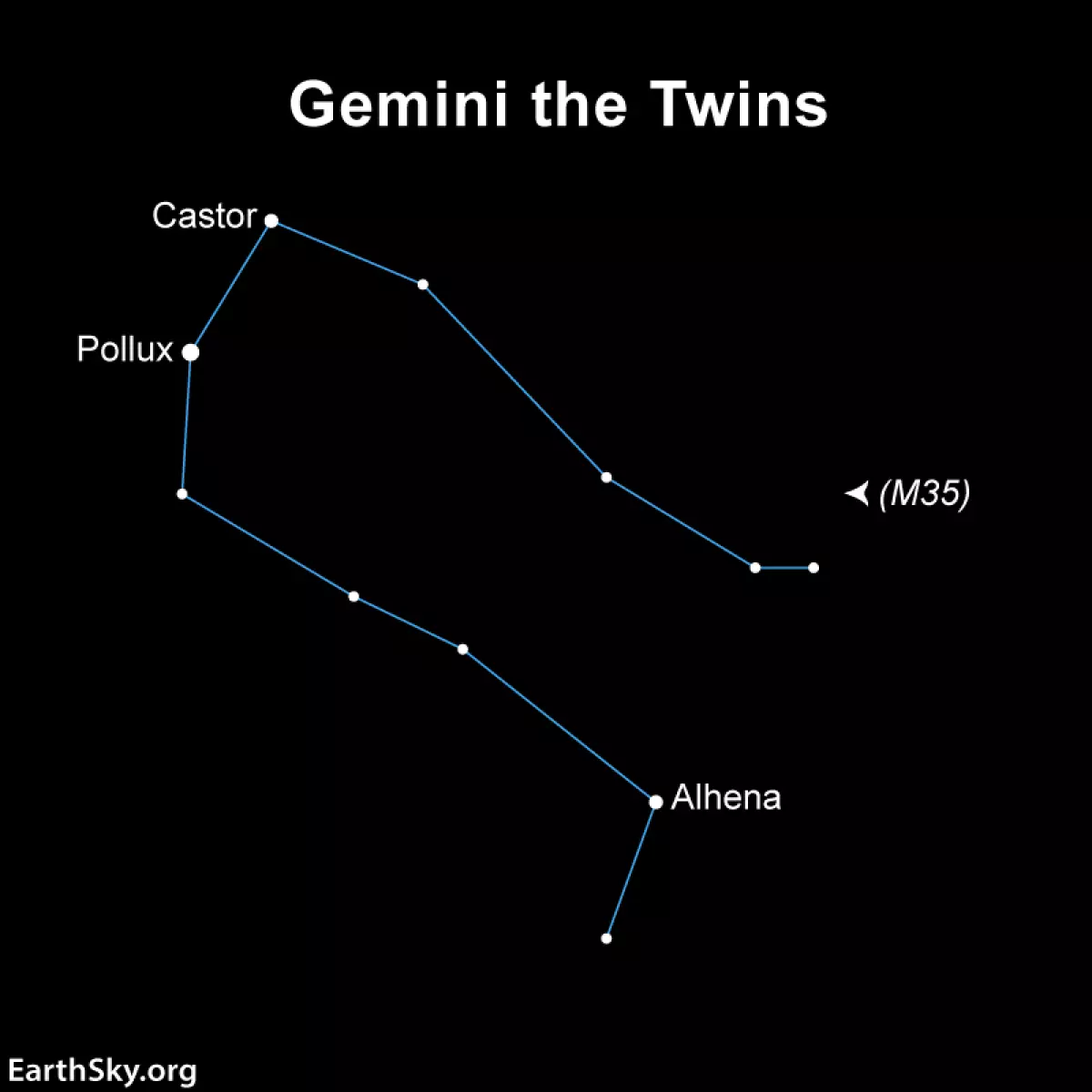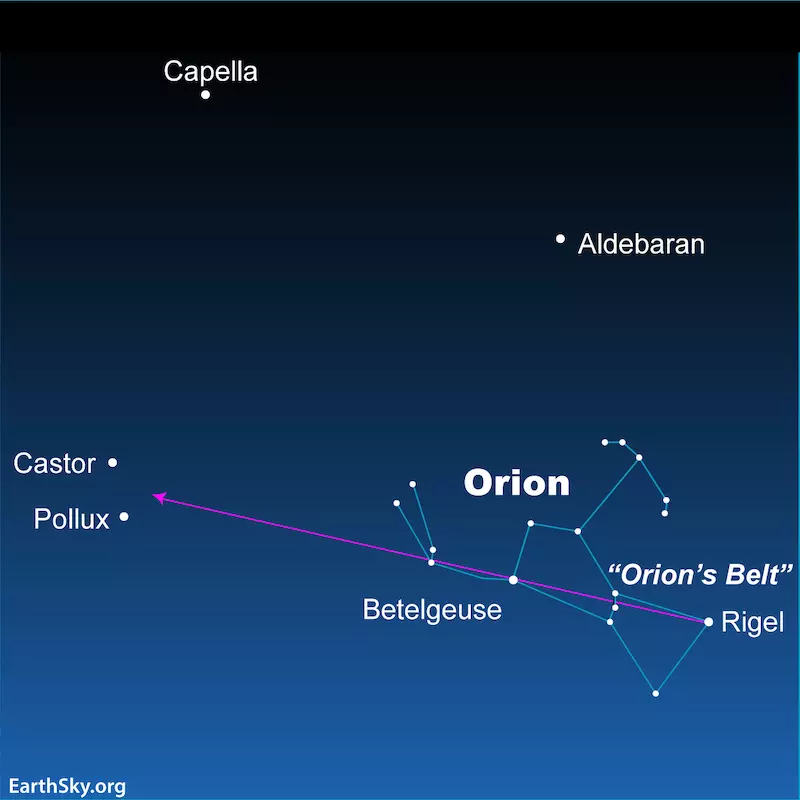
The constellation Gemini the Twins. Castor and Pollux are considered the "twin" stars in the constellation. Image via Chelynne Campion/ EarthSky.
Gemini, the constellation of the Twins
Most people see the constellation Gemini as just two bright stars - Castor and Pollux - sometimes called the Gemini twins. These two stars aren’t really twins. Pollux is brighter and more golden in color. Castor is slightly fainter and white. But both stars are bright, and they’re noticeable for being close together on the sky’s dome. From time immemorial, people have thought they looked like brother stars.
Last chance to get a moon phase calendar! Only a few left. On sale now.
Best viewing for this constellation
January, February, and March are great for observing these stars. Then Gemini is well up in the east at nightfall. In early February, Gemini climbs highest in the sky around 10 p.m. local time. In late February, the constellation is highest around 9 p.m. That’s local time, the time on your clock, no matter where you live around the globe.
Gemini stays in view in the evening sky until around May. By late May and June, Gemini is found low in the west at nightfall, and Gemini’s two brightest stars - Castor and Pollux - fade into the sunset before the June 21 summer solstice. The sun annually passes in front of Gemini from about June 21 until July 20.
Myths and lore
In skylore, Castor and Pollux were the sons of a mortal mother, Leda. Castor was the mortal brother, son of Tyndareus, and Pollux the immortal brother, son of Zeus. Castor and Pollux were joyfully united in spirit, yet sorrowfully divided by circumstance. When Castor was slain in battle, Pollux was inconsolable and begged Zeus to relieve him of the bonds of immortality. Zeus granted his request, and, to this day, Pollux and Castor stand reunited in the heavens, a tribute to the redemptive power of brotherly love.
Thus, the Greek myth of Castor and Pollux explores the inherent duality of life, of mortality, and immortality forever intertwined.

The 2 bright stars Castor and Pollux each mark a starry eye of a Gemini Twin. If you have binoculars and a dark sky, be sure to check out Gemini’s beautiful star cluster, Messier 35, or M35, in western Gemini near the Taurus border. See it, at the foot of Castor? Image via AugPi/ Wikimedia Commons/ GFDL.
How to find Gemini from Orion
If you can pick out just one noticeable sky pattern in the February night sky, it’s probably the constellation Orion the Hunter. On February evenings, from the Northern Hemisphere, Orion is high in the south.
Orion is noticeable for its Belt stars, a short, straight row of three medium-bright stars. Look below Orion’s Belt for the very bright blue-white star Rigel. Now look above Orion’s Belt for the reddish star Betelgeuse. You can draw an imaginary line from Rigel through Betelgeuse to locate Castor and Pollux. Remember, you’ll be looking for two bright stars that are noticeably close together.
How to find Gemini using the Big Dipper
The Big Dipper is an asterism, not a true constellation, but a very clear dipper-shaped pattern of stars. The Big Dipper is always located generally northward on the sky’s dome. Draw an imaginary line diagonally through the bowl of the Big Dipper, from the star Megrez through the star Merak. You are going in the direction opposite the Big Dipper handle. This line will point to Castor and Pollux.

Facing north (from Northern Hemisphere locations) on late evenings in January and February, and evenings in March. Draw an imaginary line diagonally through the Big Dipper bowl to locate Castor and Pollux. For a specific location and time of year, try Stellarium. Image via Chelynne Campion/ EarthSky.
Or use the moon to find Gemini
As the moon swings full circle through the constellations of the zodiac, it passes through Gemini for a few days each month. Check EarthSky Tonight - especially in the months of January, February, and March - for posts showing you the moon near Castor and Pollux on specific dates.
Or play around with the online planetarium program, Stellarium. It can show you when the moon moves through Gemini every month (except during those months when Gemini is behind the sun).
Spotting Sirius when Gemini is high in the sky
By the way, Gemini and nighttime’s brightest star, Sirius, reach their highest points in the sky at roughly the same time. At middle latitudes in the Northern Hemisphere, we see Gemini’s brightest stars, Castor and Pollux, nearly overhead while Sirius sparkles quite low in our southern sky. (Sirius is always fairly low in the sky of northerners.) South of the equator, it’s the opposite: Sirius shines way up high while Gemini sits low in the northern sky.
Bottom line: The constellation Gemini the Twins is home to Castor and Pollux. Learn more about these bright stars, which you can see on northern winter nights.


















